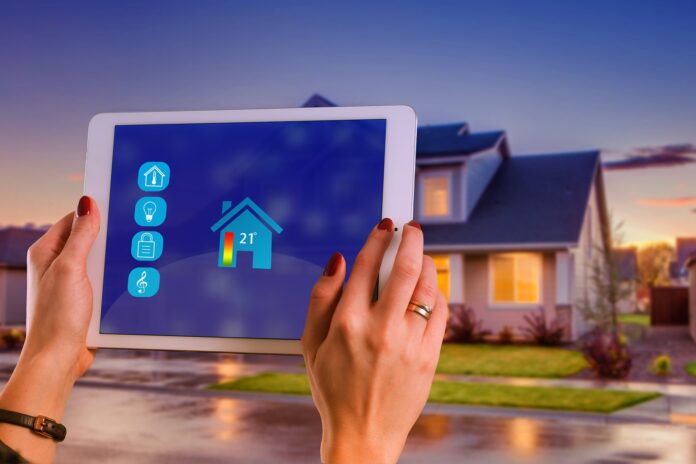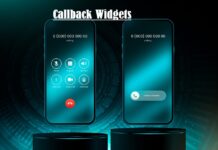The internet of things or IoT is revolutionizing the way we live. Smart homes are becoming more and more common, making our lives easier in so many ways. As a homeowner, you could be interested in buying some innovative home products and installing them.
Smart home devices, such as thermostats, smart plugs, and lightbulbs, are quickly becoming a prevalent thing to be used inside your home. They allow you to connect with your home remotely and automate stuff throughout the day.
But there is a problem — to find the best and newest apps to monitor your new smart home devices. This post looks at some of the available smart home apps in the market.
What is a Smart Home?
A smart home is furnished with technology to automate and control household systems such as the ones listed below remotely:
- Entertainment systems
- Lighting
- Thermostats
- Doors
- Surveillance cameras
- Security alarms, and
- Other associated appliances
A smart home is more than just an automated entertainment center. It’s a living space that uses wireless technology to make routine tasks less repetitive, allowing you to spend more time enjoying your new home and less time worrying about it.
What Makes a Smart Home So Smart?
A smart home usually means making life easier, not harder. After all, no one wants to walk into their kitchen and feel like they have to work twice as hard just because they installed some fancy new gadgets.
That’s why many of the top manufacturers of smart home products focus on making their devices as user-friendly as possible, especially for those new to smart homes.
For example, a smart bathtub is a smart home system that integrates:
- Water temperature measurement
- Water level detection
- Heating control
- And electrical safety
This forms an intelligent control system for freestanding tubs, making them functional and stylish. It makes the traditional bathtub fun and improves the quality of life. It has become the first choice for high-end customers to make their homes more comfortable.
Top 7 Apps for Monitoring Smart Homes
1. Nest
The Nest app gives you complete control over all Nest products, including the Nest Cam, Nest Hello doorbell camera, and Nest thermostat. The app allows you to adjust the temperature at any time and set up a schedule for when you want to turn it down or up.
It also monitors energy use and shows you what days you use the most energy so you can figure out how to reduce that usage in the future. Plus, it has a setting that automatically turns down the heat when you’re not home.
2. SmartThings
Samsung’s SmartThings is a popular smart home platform with a lot of native support for devices like Honeywell, Kwikset, Schlage, and others. It also offers a robust developer program to allow third parties to integrate their products into the SmartThings ecosystem.
As part of the Samsung family, you get integration with Samsung Smart TVs and other Samsung products, such as refrigerators and washer/dryers.
3. Google Home
Google’s smart home platform supports voice control through Google Assistant and Chromecast. Google Home is a speaker that connects directly to your Wi-Fi network and includes the Google Assistant built-in.
You can use it to control your smart home devices like light bulbs, as well as services like Spotify or Pandora.
4. Amazon Alexa
Amazon’s Echo, Echo Dot, and Tap are all speakers that connect to Wi-Fi networks and include Amazon’s built-in voice assistant, Alexa.
Using the Alexa app on your phone, you can set up third-party skills that let you control other devices in your house or office from the speaker. For example, you could turn on your Philips Hue lights by saying, “Alexa, turn on my bedroom lights.”
5. Philips Hue
It is a famous smart home brand for a good reason. The Hue app allows you to control your lights, scenes, and routines from wherever you are in the world.
You can make custom light routines so that your lights will automatically turn on after you get up in the morning or get home from work. You can also set timers for lights and make them flash if you receive a notification on your phone.
The Philips Hue app is available on both Apple and Android devices.
6. Apple HomeKit
Apple has its home automation system called HomeKit. It’s compatible with a handful of smart home products, and it works with Apple’s virtual assistant, Siri. You can use HomeKit with an iPhone, iPod, or iPad touch running iOS 8.1 and above.
HomeKit is built into the new iOS and can control devices individually or by grouping them into scenes, like “I’m leaving” or “Good night.” You can also set up triggers to automatically turn on devices at specific times of the day. For example, if you set up a “Good morning” scene, it could turn on your lights and brew coffee at 7 a.m. every day.
A variety of connected thermostats and lighting products are supported by HomeKit, including the Ecobee3 thermostat, the Elgato Eve Room sensor, Philips Hue bulbs, Lutron Caseta switches, and more.
7. WeMo
There are also smart plugs that connect to a home Wi-Fi network, allowing you to control a device from anywhere using a smartphone or tablet. WeMo works with Google Assistant and Amazon Alexa, which will enable you to manage your smart devices using voice commands.
To Sum Up
There are many apps you can use to monitor smart homes. A number of them are available for iOS and Android, but some are Windows only. Each one uses different features and procedures, so one app may work better for you than the next.
One must first determine what level of interaction is desired with the smart home devices. It is crucial to understand how each app works as this will ensure a successful implementation and adoption.





